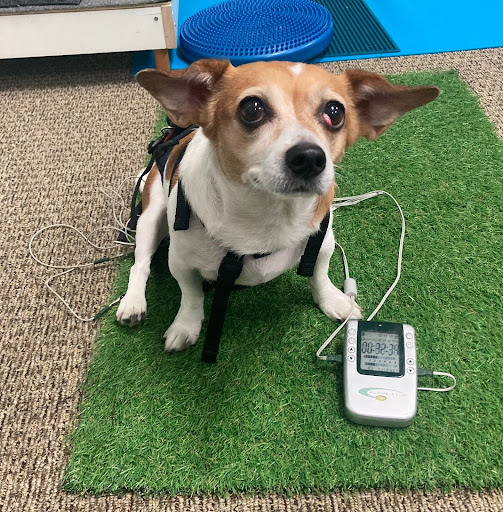The Role of Electrical Stimulation in Veterinary Rehabilitation
When our pets suffer from injuries or neurological conditions, recovery can be a long and challenging journey. Thankfully, advancements in veterinary rehabilitation have introduced new ways to restore mobility, rebuild muscle strength, and improve overall quality of life. One of the most promising innovations in the field of rehabilitation is pet electrical stimulation therapy. This is a cutting edge, science-backed approach that helps pets heal.
What is Pet Nerve Stimulation Therapy?
Nerve stimulation is a therapeutic technique that uses controlled electrical pulses to activate specific nerves or muscles. In veterinary rehabilitation, this technology is carefully adapted for pets to support recovery after surgery, injury, or to treat neurological illness. By delivering gentle electrical signals through specialized equipment, pet nerve stimulation encourages muscle contractions, improves blood flow, and retrains the nervous system to respond appropriately. This process helps pets regain strength, coordination, and comfort during their recovery.
How Nerve Stimulation Helps in Pet Rehabilitation
Pets recovering from orthopedic surgery or a spinal injury often face challenges with mobility and muscle weakness. Nerve stimulation therapy can be a valuable part of a comprehensive rehabilitation plan. Here are some of the ways that it helps support recovery:
- Improves Muscle Strength and Tone – When a pet is unable to use certain muscles due to pain or paralysis, those muscles can begin to weaken quickly. Nerve stimulation mimics natural muscle contractions, helping to maintain tone and prevent atrophy while your pet heals.
- Enhances Nerve Function – For pets with neurological injuries, the connections between the brain and muscles can be disrupted. Nerve stimulation can help reestablish these connections and promote better motor control.
- Boosts Circulation – The gentle pulses used in nerve stimulation increases blood flow to the affected area, aiding in tissue repair.
- Reduces Pain and Inflammation – Some types of electrical nerve stimulation can block pain signals and release endorphins, providing drug-free relief for pets experiencing chronic discomfort.
Conditions that Benefit from Pet Nerve Stimulation
Veterinarians may recommend nerve stimulation for pets with conditions such as:
- Post-surgical recovery
- Spinal cord injuries
- Neurological disorders
- Degenerative myelopathy
- Muscle atrophy or weakness due to inactivity or illness
Even aging pets with declining mobility can benefit from this gentle, noninvasive therapy.
From advanced technology to compassionate care, PrimePet Rehabilitation believes in utilizing tools like nerve stimulation therapy to give the best future possible to our patients. We want pets to recover faster, have strong muscles, and regain confidence in their movements. If your pet is struggling after an injury or surgery, contact us today. With the right therapy and support, your pet can take meaningful steps towards improving their health and happiness.
